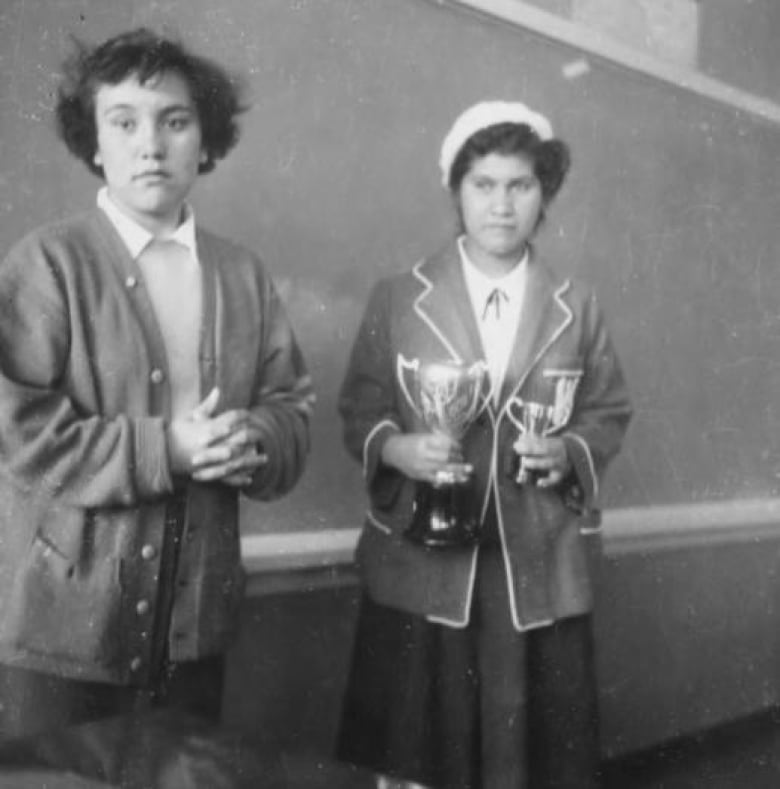Steve Sxwithul'txw survived residential school. Now he's trying to honour family who didn't
Penelakut Tribe member has 8 relatives listed among children who died

When the National Centre for Truth and Reconciliation released the names of almost 3,000 children who died in residential schools, survivor Steve Sxwithul'txw noticed eight children with the same last name he was born with.
"Shock is the first reaction," said Sxwithul'txw. "There is no clear guide as to how to process this type of loss that has never been previously acknowledged."
It marked the start of Sxwithul'txw's ongoing search for the best way to commemorate children who lost their lives in Canada's residential school system, which was established in the 1880s and saw around 150,000 Indigenous children removed from their homes over the following century. The schools were part of a federal policy to assimilate Indigenous children, many of whom were abused in the institutions.
Sxwithul'txw, a member of the Penelakut Tribe near Chemainus, B.C., attended Kuper Island Residential School in the 1970s.
He changed his last name from Johnny in 2001 to honour his late grandfather — and Johnny was the surname he recognized among those listed in a commemoration ceremony at the Canadian Museum of History in Gatineau, Que., on Sept. 30.

Unsure what to do with the information, Sxwithul'txw, a film-maker and journalist, reached out to his community to find out how best to honour its lost members.
This led to conversations with Indigenous people from nations along the south-east coast of Vancouver Island, from where many children were taken to attend the Kuper Island school, located just off Chemainus.
Those children included Merle Seymour, a member of the Cowichan Tribes.
"My grandmother did not want me to go to a residential school. One time she told me that she had a brother that went to Kuper Island School and never returned," said Seymour.
"But she had no say because she didn't know how to speak English."

Seymour doesn't know whether his uncle is on the list of the dead. He didn't even know the man's name.
Finding peace for families like the Seymours compelled Sxwithul'txw to continue reaching out to communities who had lost children to the Kuper Island school.
He decided to approach Chief Mike Wyse from Snuneymuxw First Nation, whose relatives also attended the school. The two men met in Wyse's office in Nanaimo, B.C., where the chief revisited the list of dead children on Sxwithul'tx's phone.
The list included many names connected to his family and community.
"It's like opening up a new wound. It's the same feeling you get when you bury a lost loved one," said Wyse.
He, too, feels compelled to honour the lives of those children in their home communities, and suggested an annual day of commemoration.
"We definitely need to recognize and acknowledge our lost people in this system on a day within a calendar year," said Wyse. "It really enlightens us on how devastating this Indian residential school was on our people."

According to Sxwithul'txw, 121 of the children named by the National Centre for Truth and Reconciliation (NCTR) died at Kuper Island.
Looking for guidance about what to do with this information, Sxwithul'txw attended a conference in Winnipeg in October put together by NCTR where survivors and leaders discussed what the next steps should be to honour the dead.
"Lots of those children never had a proper respectful Indigenous-based community funeral," said NCTR director Ry Moran at the conference.
"We've helped them travel a little bit further wherever they may be so they can go back to their loved ones, back to their communities, in a good way," he said, referencing the spirits of the dead.
Moran said at the end of every NCTR event, attendees sing Happy Birthday and pass out little cupcakes to honour all the survivors of residential schools that never had a birthday.
"Sometimes you have to do things like that in order to set things in the past right," said Moran.
According to Sxwithul'txw, many ideas to commemorate the lost were presented for consideration at the conference, but there is no funding guaranteed to put them in motion.

Sxwithul'txw has written to the NCTR for more information about the eight children who share his former surname, but was told there have been so many similar requests it could take more than a year before it can be released.
In the meantime, he plans to keep working with the Penelakut people and neighbouring nations to determine how to process the grief and commemorate the lost lives.
"These names are just the beginning of something and not the end," said Sxwithul'txw, who is a father to young children himself.

Truth and Reconciliation organizers say the 2,800 names released this year do not represent the total number of children who died in residential schools. According to the NCTR, the number of children identified by name, as well as unnamed in death records, is about 4,200.
In 1931, at the peak of the residential school system, there were about 80 institutions operating across the country. The last residential school in Canada closed in 1996.
To hear Steve Sxwithul'txw speak about his experience on CBC's The Early Edition, tap the audio link below:
With files from Steve Sxwithul’txw